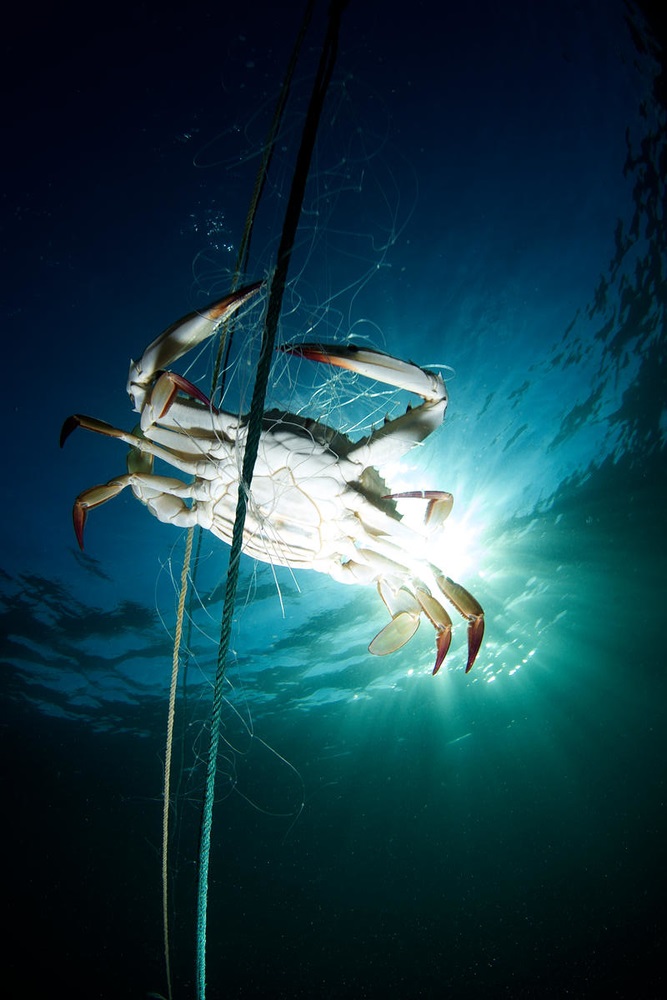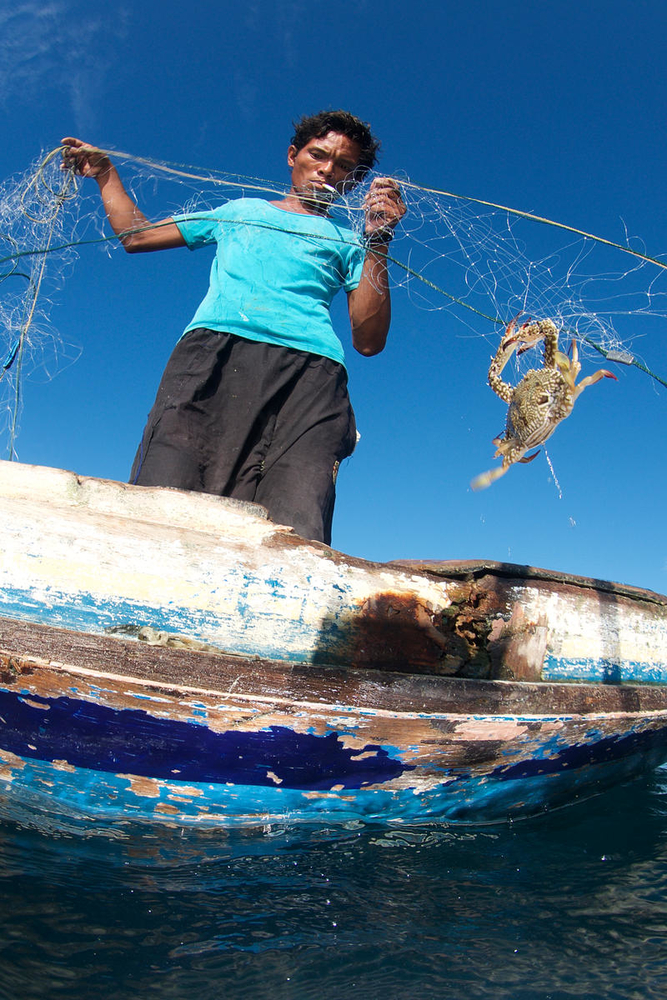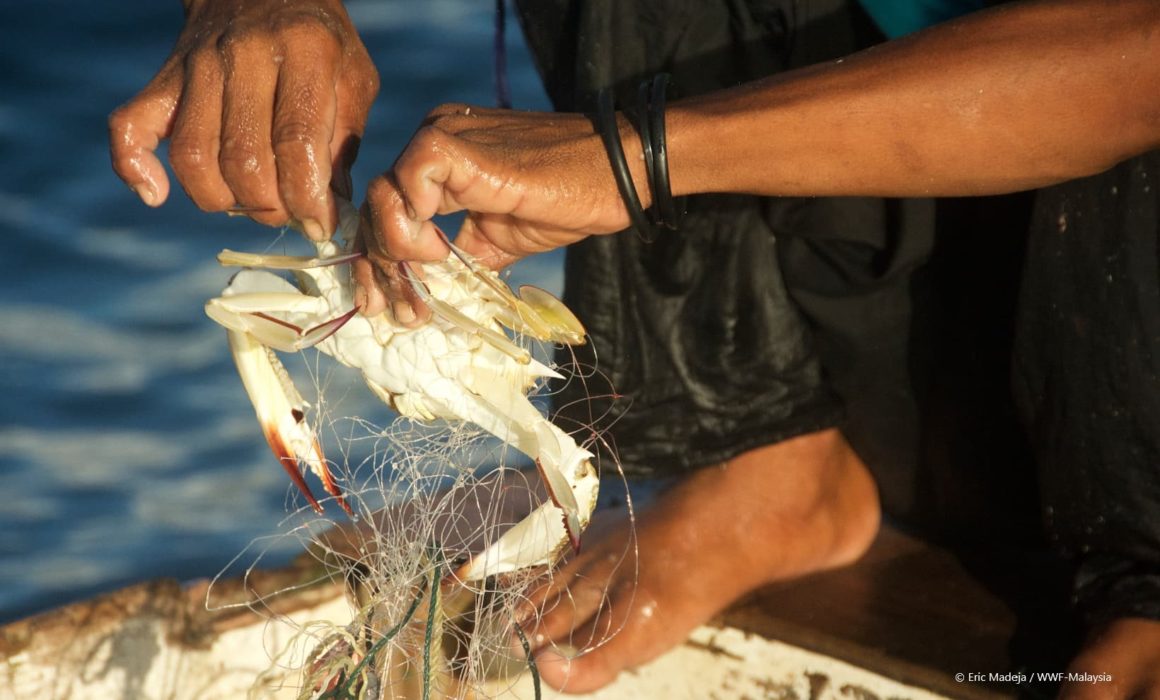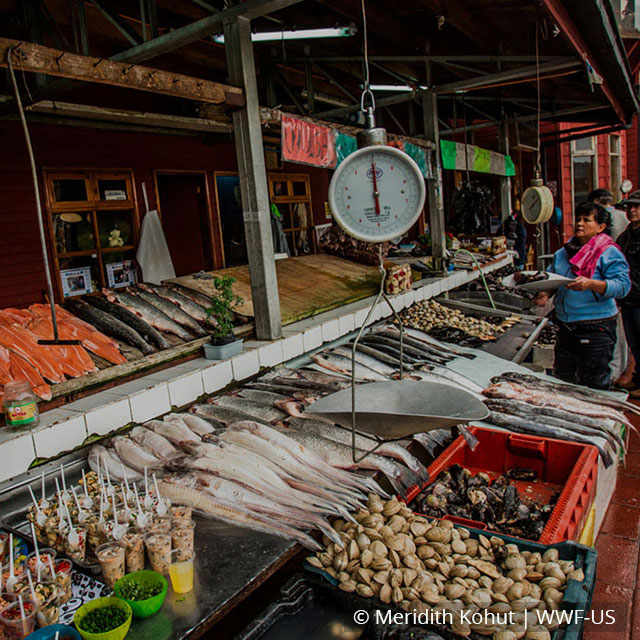Picture this: it’s summertime and you are enjoying a plate of Old Bay-smothered crab cakes at a seaside restaurant in Maryland. You might assume that the crab meat on your plate was sourced locally, considering the blue crab is a well-known Maryland symbol, and a powerful icon of much of the mid-Atlantic region. Pre-1990s, that assumption would most likely be correct. The Chesapeake blue crab fishery was the most valuable fishery in the Bay at the time and it met most of the demand for the species in the region. In fact, until the 1990s, most crab meat consumed in the United States came from domestic sources. This all changed when the major domestic blue crab fisheries, like those in the Chesapeake Bay, were overfished to the brink of collapse – in large part due to a lack of sustainable fishery management.
The near-collapse of the Chesapeake Bay blue crab fishery precipitated a series of negative impacts on the seafood companies that depended on this iconic crab species. Companies found themselves struggling to meet contractual demands because of the volatile supply of crab; inventory management was challenging; relationships with customers were under pressure; and profitability was at risk. In fact, Maryland and Virginia’s economies were impacted by more than $640 million in losses between 1998-2008 because of the crab’s decline.1

To keep their businesses afloat, companies selling Maryland blue crab
meat were forced to look elsewhere for substitutes. Phillips Seafood, a
Baltimore-based company, led the way by turning attention toward Southeast Asia
and the Blue Swimming Crab (BSC) fisheries in Indonesia, Vietnam, Thailand, Sri
Lanka, and the Philippines. Soon, thousands of tons of BSC were being imported
into the US market every year from these new source fisheries and dozens of
US-based companies relied on them as their main, or sometimes only, source of
crab. When these fisheries began to show similar signs of decline as the blue
crab fisheries in the Chesapeake Bay, industry realized that it needed to act. Recognizing
that weak governance and supply volatility were issues that no single company
could solve individually, industry actors came together, again under the
leadership of Steve Phillips of Phillips Seafood, to tackle the fundamental
issue of fishery mismanagement as a group.
“Based on our extensive experience in the Chesapeake Blue Crab fishery, we decided to be proactive about sustainability in Southeast Asia when we expanded into these countries. Phillips Seafood led the way in encouraging the formation of processor associations in the new source countries, specifically to address the threats of overfishing and supported the formation of the Crab Council to engage the industry.”
Steve Phillips, CEO and Founder, Phillips Seafood.
The creation of the Crab Council under the National Fisheries Institute (NFI CC) in 2009 was one of the first times in seafood industry history that companies banded together to voluntarily collaborate on natural resource management issues and, critically, contribute funding to improve natural resource management at the base of their supply chains. With Council members collectively representing around 70 percent of the total BSC imported into the US today, this collaboration represents significant market power.

One of the most innovative approaches that the NFI CC introduced is a financial contribution to source fisheries that is based on members’ total annual pounds of BSC product imported into the US; building fishery improvement and natural resource management into these companies’ business models. Today, Council member companies pay a quarterly assessment of 2¢ per pound for all blue swimming crab that they import into the U.S. The pooled funds are used to implement Fishery Improvement Projects (FIPs) in source countries in Southeast Asia. As more firms have joined the Council the pool of funds has grown, resulting in more than $2.1 million invested in Southeast Asian BSC fisheries by the end of 2017. This unique collaborative model, in an otherwise fragmented industry, provides an example of how to develop a long-term funding mechanism to address the costs of fishery management reform across multiple countries or commodities.
In 2018, WWF-US partnered with consulting groups Wilderness Markets and Vivid Economics to assess how supply stability (or lack thereof) in the BSC production regions and price volatility affected end market buyers in the US. Analysis showed that collective supply chain engagement and the investment model utilized by the CC is critical to the safeguarding of the industry. The availability and affordability of raw material for seafood buyers and suppliers is now and will continue to be one of the biggest risks the industry faces. As stocks decline, costs increase, and different parts of the supply chain must absorb them. Modelling shows that US buyers face an increasing risk of cost shocks leading to the erosion of their margins and market share. For example, over-fishing of BSC in Indonesia, the largest supplier to the US market, can lead to increased prices (or cost shocks) to buyers and, ultimately, to consumers as fishers catch fewer and fewer crab. Additional modelling suggests that a 15% increase in wholesale prices can expect to increase prices to U.S retailers by a third, leading to potential ‘demand destruction’ with crab being taken off shelves and menus. If prices went up by 15% across all producing countries, almost all small- and medium-sized firms importing BSC would be expected to lose nearly all of their margin and market share.While fishery management is complex and will require ongoing efforts in a constantly changing environment, the analysis demonstrated that without action, trends in volatile supply and pricing will continue to accelerate.
The NFI CC has made landmark achievements in rallying industry to support the implementation of fisheries reform and sustainability initiatives in Southeast Asia. However, there is still much work to be done. It’s too soon to know if the current FIP investments will be enough to put the BSC fisheries on a more sustainable path, but the relationships forged by the Council to tackle a common problem will enable easier collaboration toward solutions.
To learn more about the business case sustainable seafood, please visit: www.SeafoodSustainability.org/industry/business-case.
[1] Chesapeake Bay Foundation, Bad Water and the Decline of Blue Crabs in the Chesapeake Bay, December 2008.




